Orbea Avant H60 Disc road bike review
Perhaps the only bike at this price point with such an integrated cockpit – but is this where you should be spending your money?
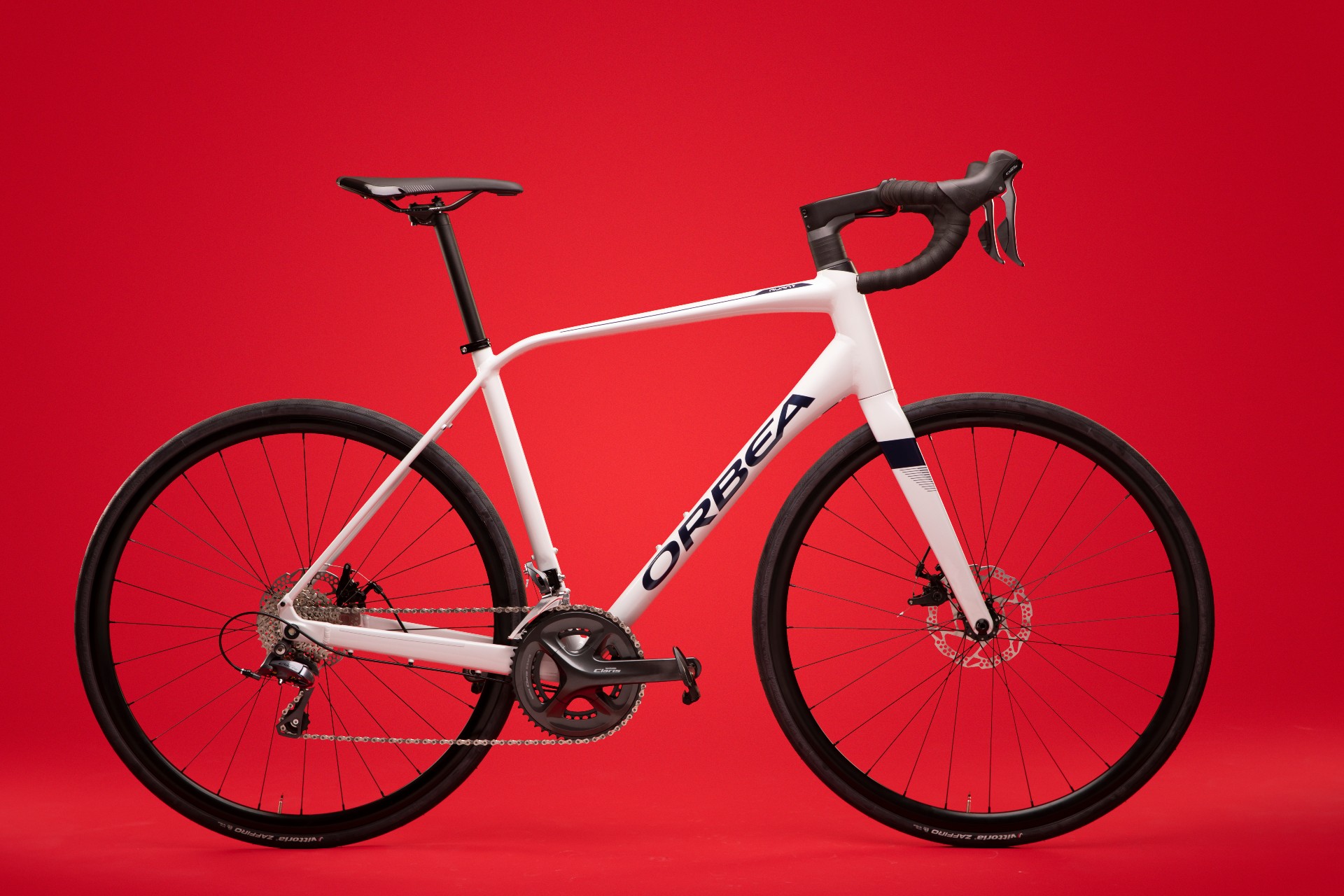
The Orbea Avant H60 Disc was fun and comfortable to ride. Not as spritely as fancier frames, but still with a lot more pep than what the scales would suggest. There was ample gear range such that I never felt like I was grinding or in danger of spinning out, but the gaps between the gears were larger than ideal for all-out road riding. But a higher spec groupset seems to have been the sacrifice for the high level of cable integration – which is greater than any other bike I’ve seen at this price point. The brakes do have a lot of potential, but would need upgrades to the pads and cables to really get the best out of them.
-
+
Super tidy cable management
-
+
Robust 28mm tyres
-
+
Comfortable ride
-
+
Mudguard mounts
-
+
Great brake calipers
-
-
Cockpit is not adjustment friendly
-
-
Squidgy brake cable housing
-
-
Only eight-speed
-
-
Fork doesn’t match the rear's clearances
You can trust Cycling Weekly.

Designed to offer comfort over long rides, the Orbea Avant H60 Disc fits into Orbea’s range as an endurance road bike. Although by no means does that preclude you from stamping on the pedals and getting a hard training session in. Coming with 28mm tyres and room for larger, dabbling in a little light gravel certainly isn’t off the cards.
With a heritage which dates back to 1840, you might have thought that this Spanish brand could be the oldest bike manufacturer still going. But as Orbea was originally a gun manufacturer and ‘only’ got into the bike business in 1920, that title sits instead with Bianchi – making bikes since 1885.
Still, with over 100 years of experience, Orbea at least earns the vaulted position of being the second oldest bike manufacturer in the world.
The construction: Orbea Avant H60 disc
Frame and fork
This is one of the highpoints of the bike. With an aluminium construction, the Avant frame benefits from triple butting – meaning that the wall thickness of the tubing varies throughout their lengths, providing strength where it’s needed and saving weight where it’s not.
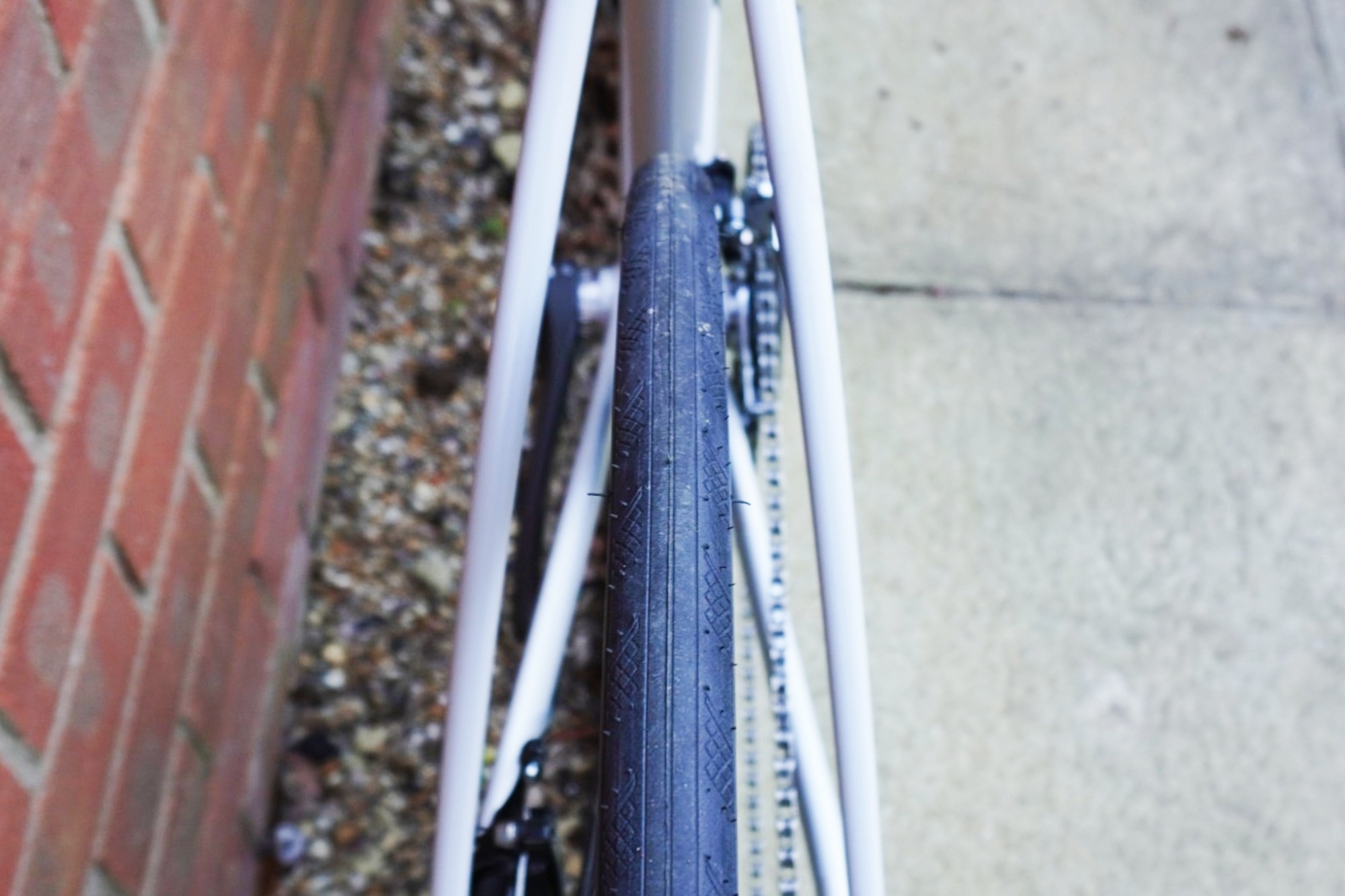
Bridgeless seatstays provide some very nice clean lines, while also offering capacious clearance for the rear wheel – which is great to see. If so inclined, you could fit in some pretty chunky rubber for a more cushioned ride, or simply be left with ample clearance for the addition of some mudguards for rides in more inclement weather.
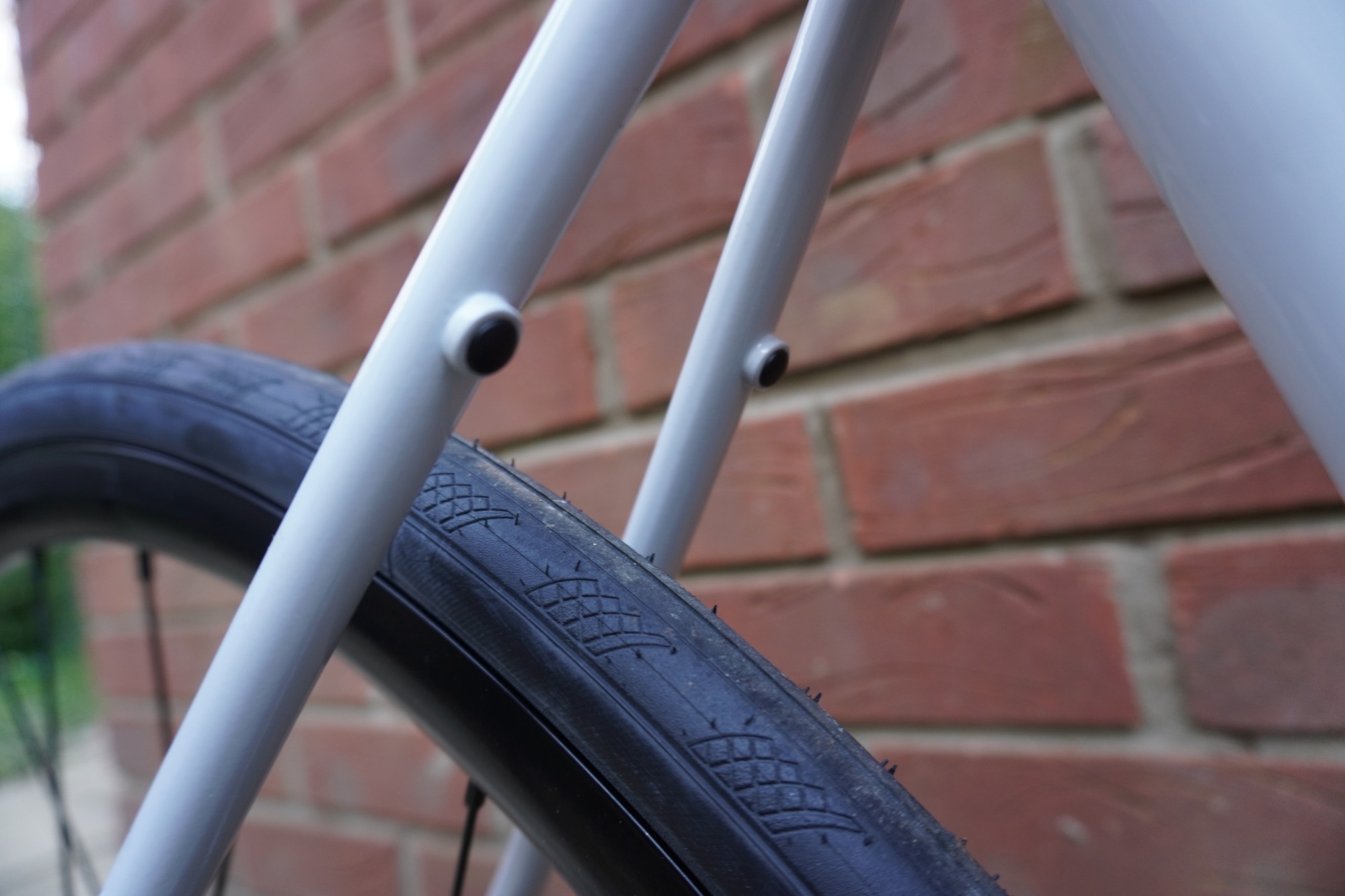
And yes, mudguards are indeed a possibility. Although the mounts are quite discreet, they are most certainly there by the dropouts and on the seat tube. A seatstay bridge would need to be affixed, but there are mounts for that too. It’s worth noting that the seat tube mount is rather higher than you would typically get, which sacrifices some of the protection that would ordinarily be offered to the drivetrain.
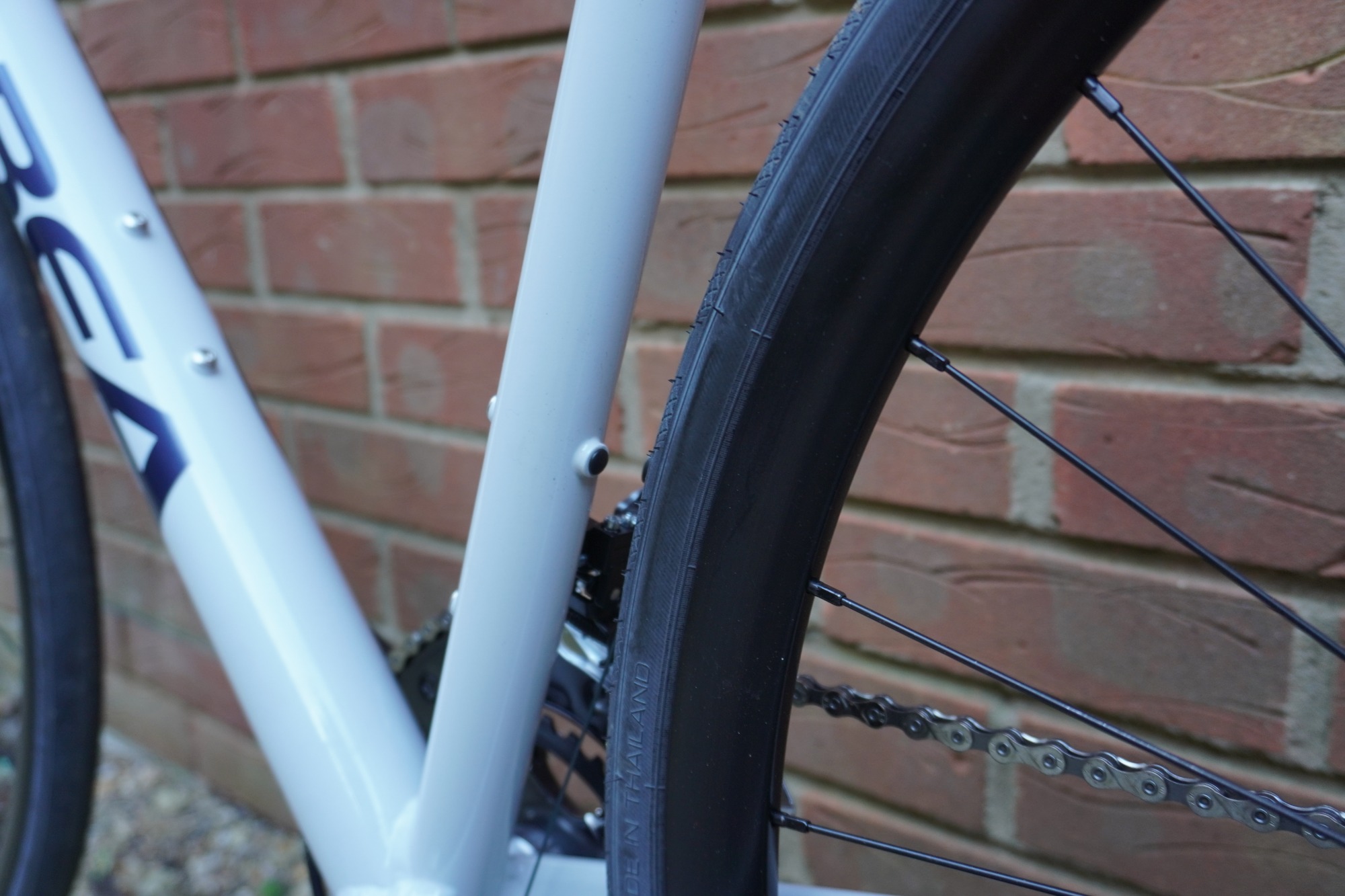
On the front, the mudguard mounts onto the thru-axle in a very innovative design – the inside of the axle is actually threaded to take a standard M5 bolt. A very clean and minimalist design, however I would imagine that it’d make taking the front wheel out for cleaning quite labour intensive.
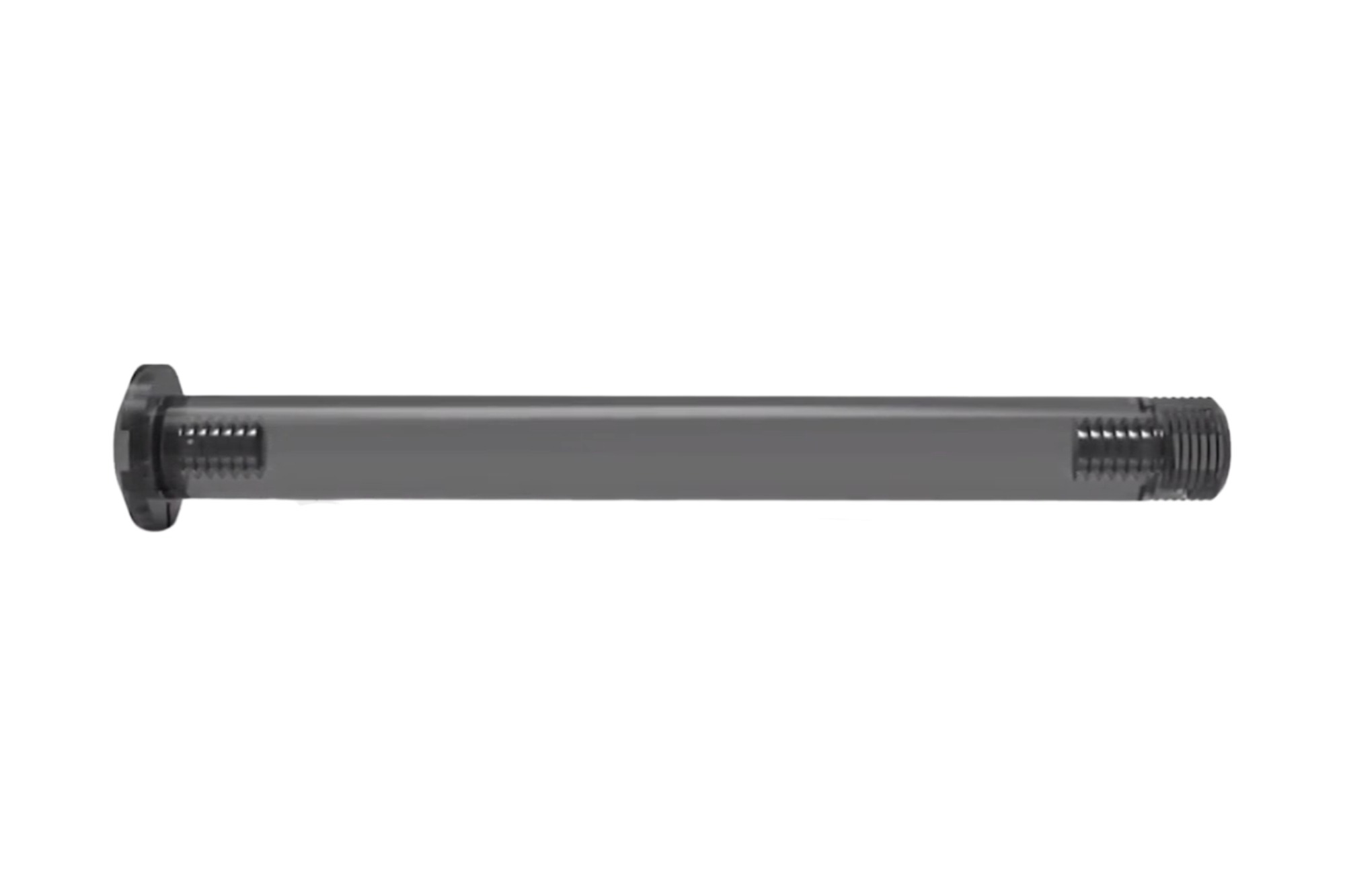
Other nice points are the standard standards of 100x12mm and 142x12mm thru-axles for the wheels, an external bottom bracket and a 27.2mm seatpost. These all perform their respective jobs very well and make upgrades or part-swaps much less of a headache and so are very welcome to see.
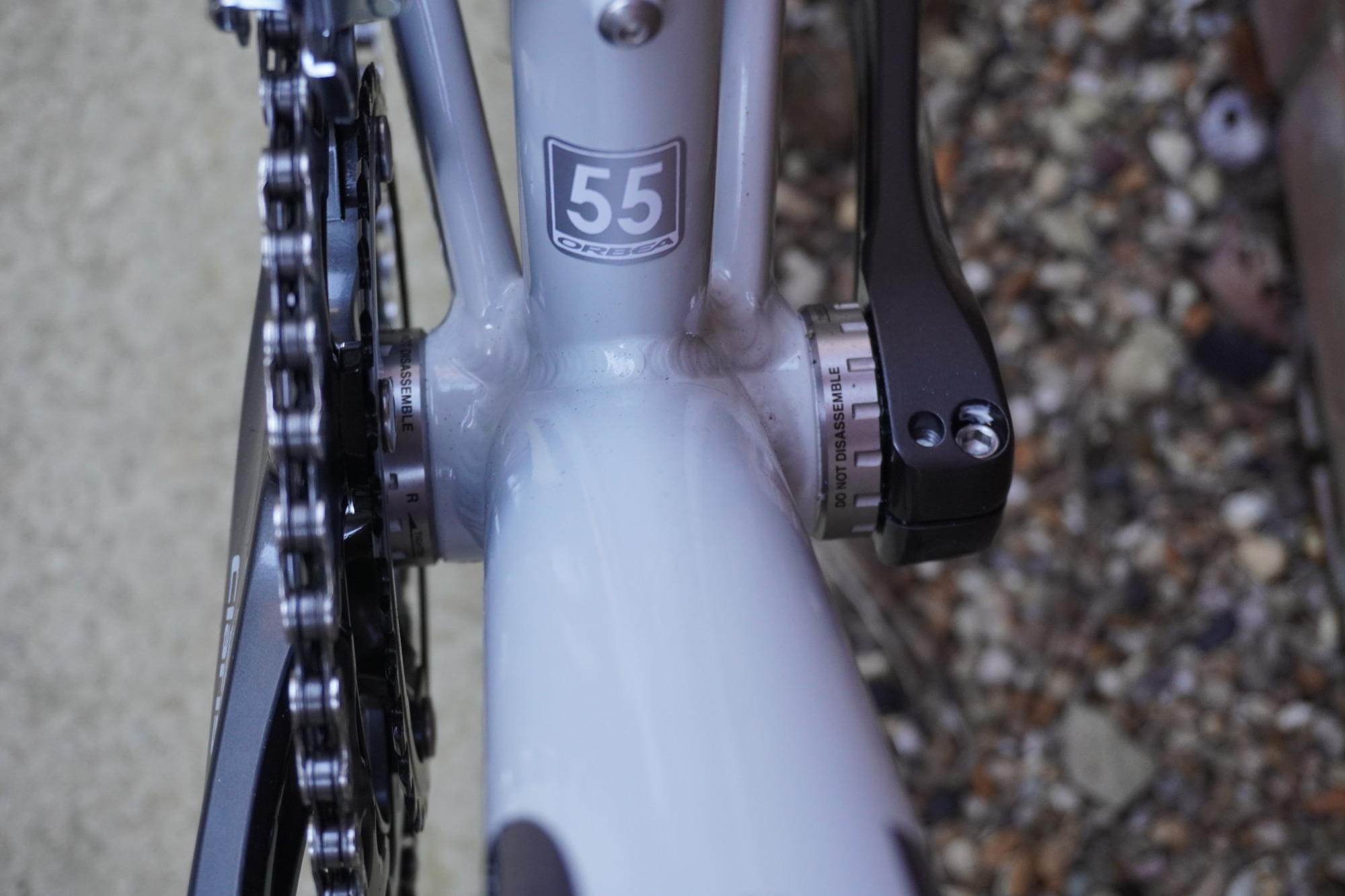
Moving onto the fork, we have an item with carbon legs and an aluminium steerer. The clearances here are much less generous than on the rear and causes quite a significant mismatch between what tyre widths are able to be accepted between the front and the back. Although Orbea does state that the fork should be able to handle 700x35c.
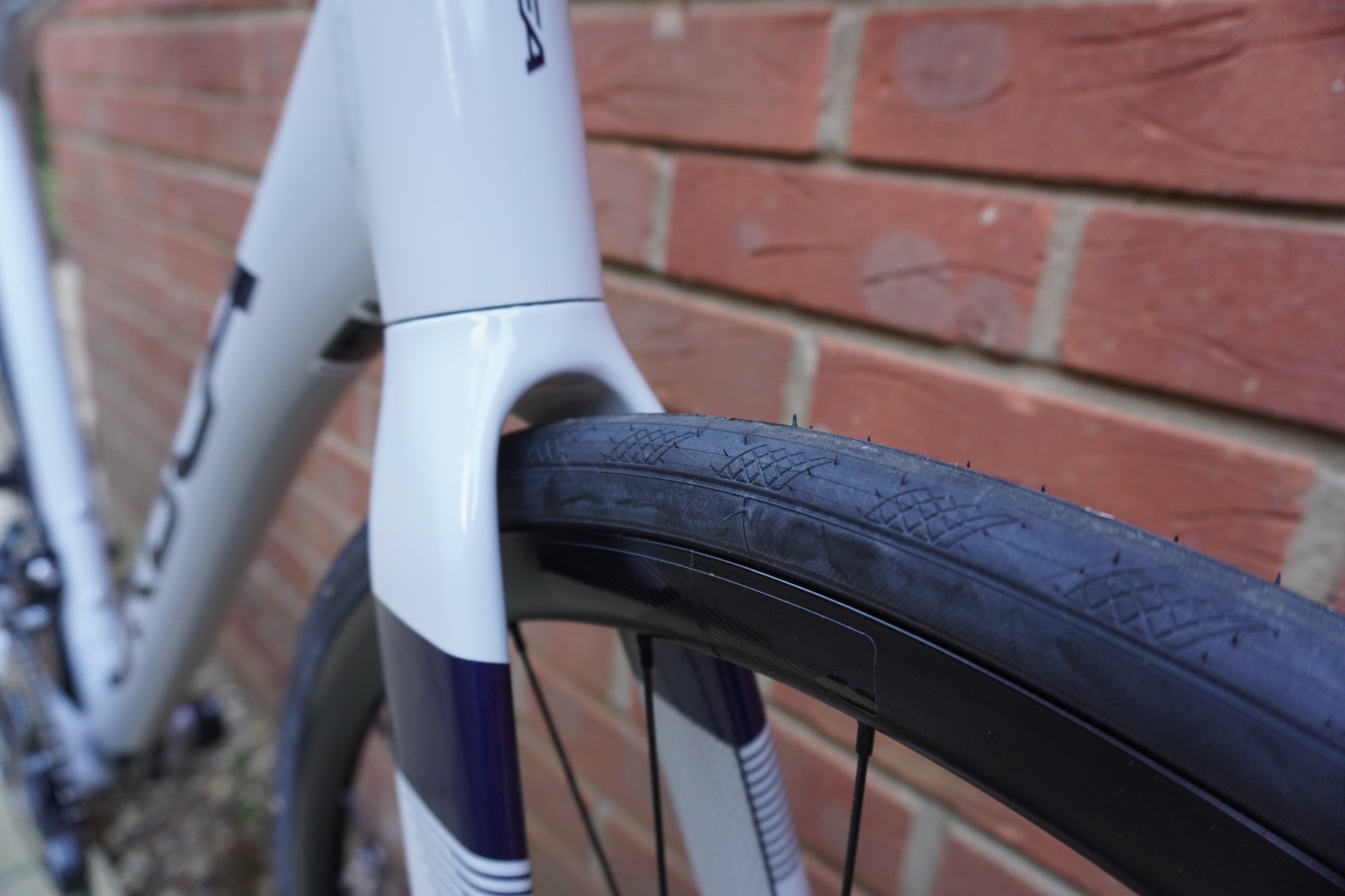
On first look, it does seem an odd specification choice. The reasoning behind the choice does at least become clear when we look at the cabling routing. That said, understanding how a decision has been made is quite different to understanding why it has been made – and I’m still left a little puzzled about the latter.
The cockpit and cabling
The reason for the narrower clearance of the fork is because it mimics the designs of Orbea’s much fancier and racier bikes – ones which don’t need or want overly wide tyre clearances. And the reason this particular fork has been used is because it allows for the gear and brake cables to be routed through the head tube, providing a much more integrated setup than (as far as I’m aware) any other bike at this price point.
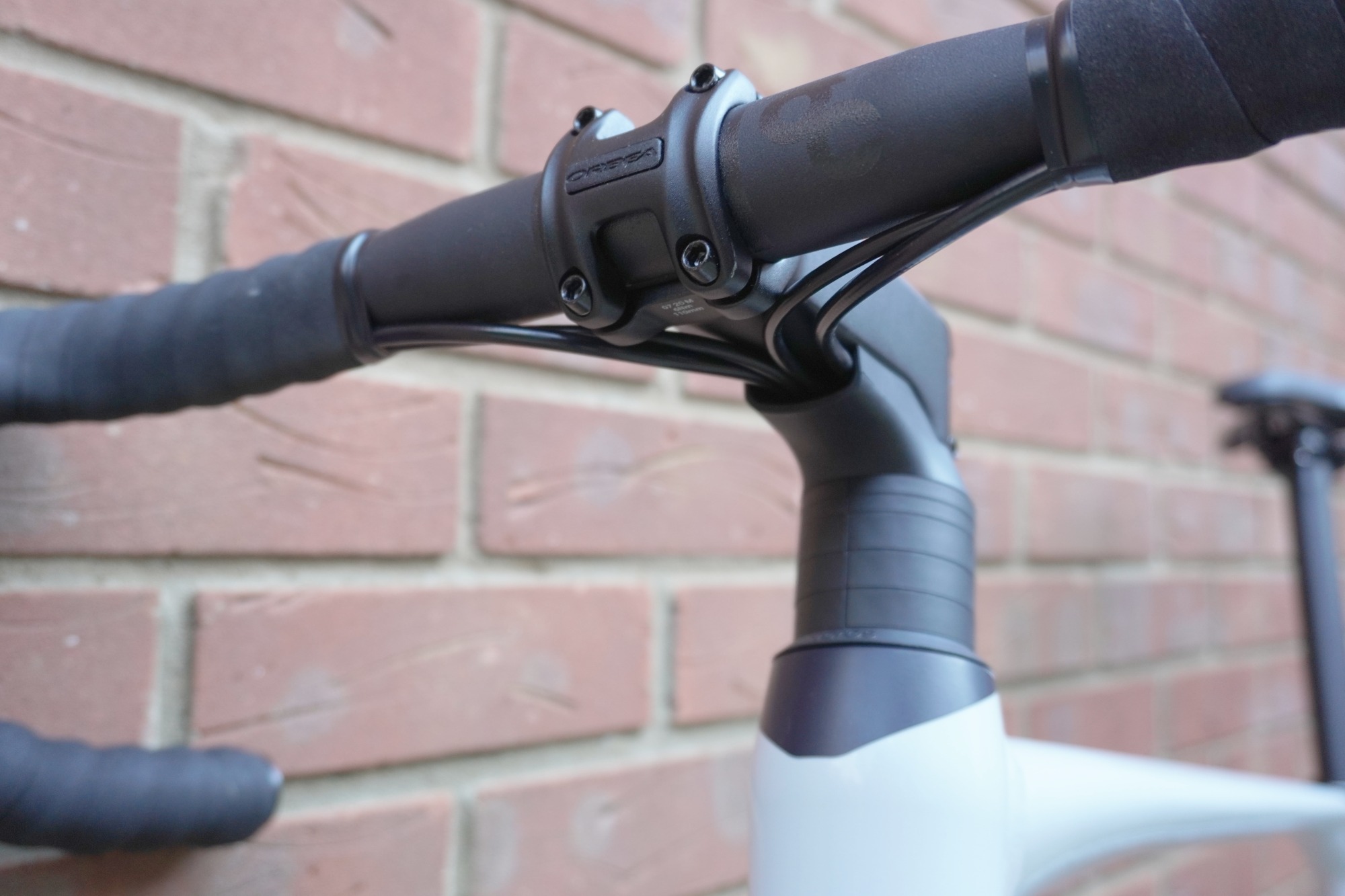
Generally, this level of integration is only seen on the most expensive bikes looking to cheat the wind and tuck any superfluous element out of the way.
To put this in context, Ribble – a brand famous for its great value and its online bike builder, which allows you to customise the spec of your bike – won’t even offer this level of internal cable routing until you get to the £2,000 mark.
However, this does mean that you can’t reshuffle the spacers under the stem to get the handlebars set up at the right height. Any modifications to the stack height would require the steerer tube of the fork to be cut, meaning you can’t go back if it turns out that the position you were trialling was a little too low.
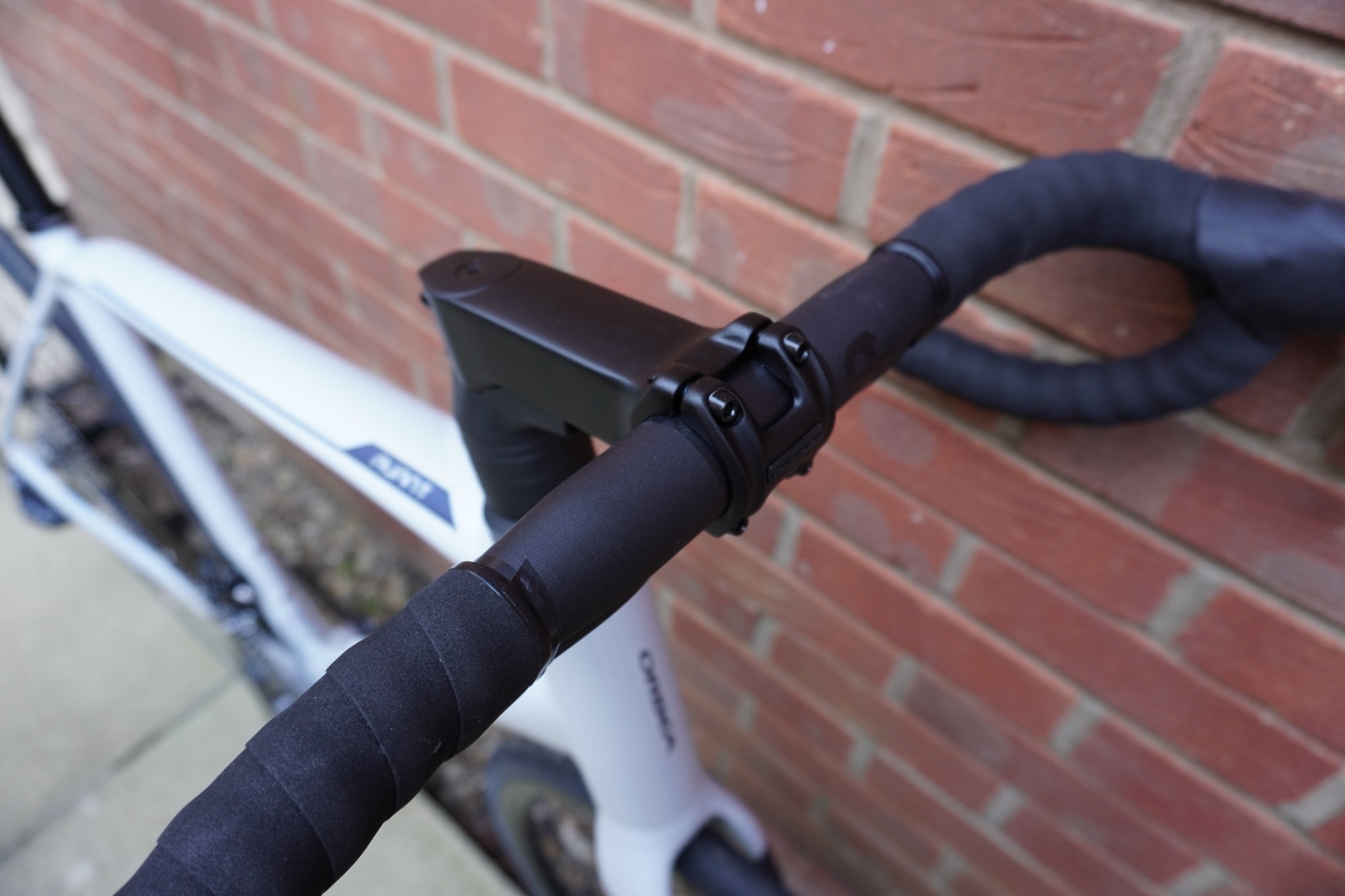
It also means that experimenting with stem length is a lot more expensive as you are tied to a propriety model. And when it comes time to replace the brake and gear cables, this is an even more fiddly task than it already is with an internal cable routing system that enters at the downtube.
Getting the stack and reach set correctly is something that really benefits from the ability to experiment and see what works for you. For any cyclist who is yet to elect upon their perfect position, an integrated setup is likely to be quite an impediment to getting set up in a comfortable and efficient position.
Gearing
Shimano’s 2x eight-speed Claris groupset is specced on the Orbea Avant H60 Disc, which is a little unusual at this price point. Generally, the lowest you’d see is Shimano’s nine-speed Sora groupset or the 10-speed Tiagra. Certain bike manufacturers even manage to slap on some 11-speed 105 – although this is quite rare.
But just because Claris has three gears fewer than 105 doesn’t mean that it’s therefore 27% worse. Depending on your demands from your drivetrain, eight sprockets could easily provide all you need.
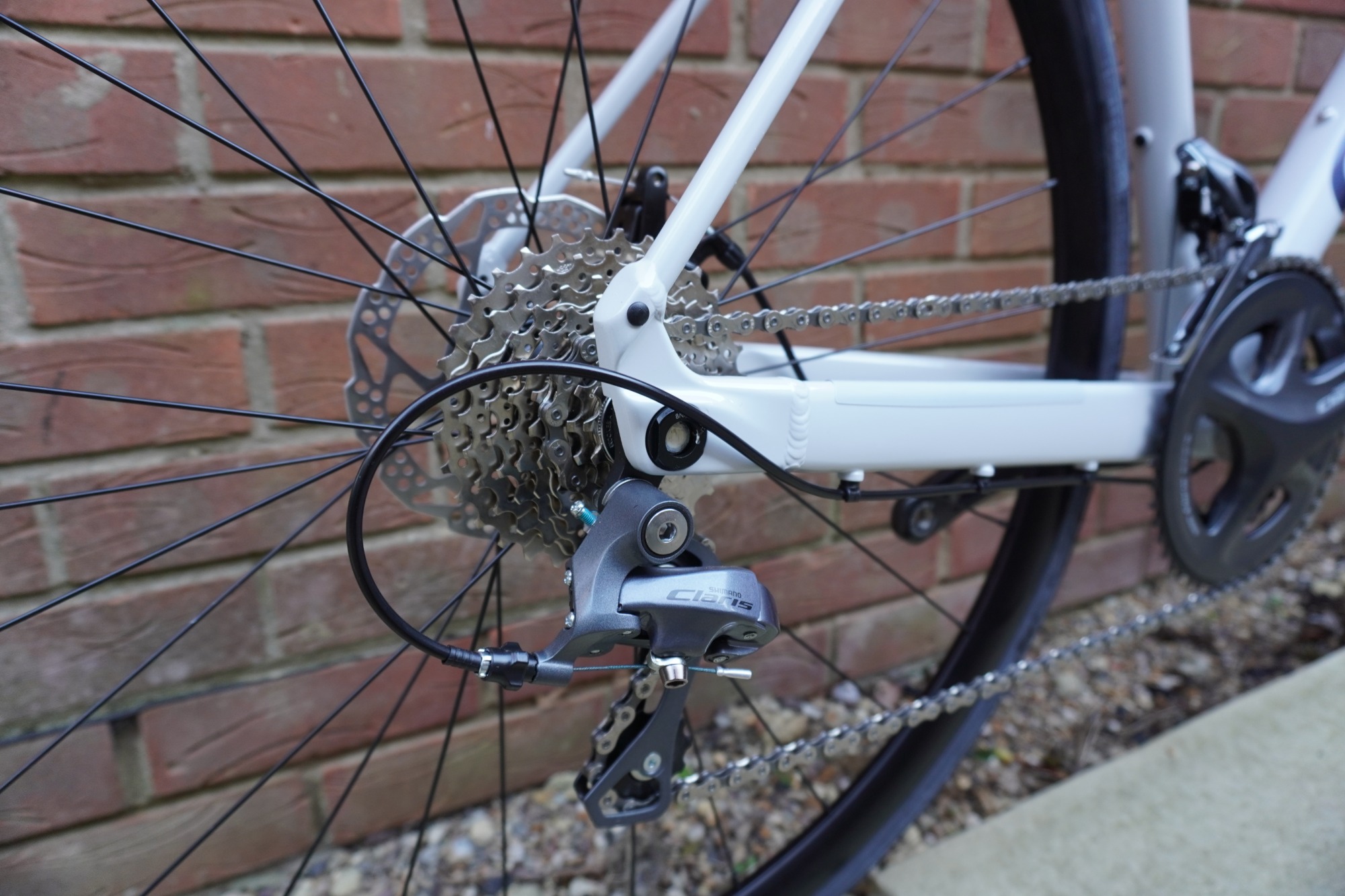
The Orbea Avant H60 Disc has 50/34 tooth chainrings and a cassette that spans from 11 to 32 teeth. This is pretty much the standard range of gears for bikes in this category, so you’ll be equally able to continue pedalling on fast downhills and winch your way up steep climbs as you would on a 105 groupset.
More gears in this case just means smaller jumps between gears. You get less of that feeling of being in too hard a gear but the next one down being a little too easy.
However, it’s worth remembering that the jumps between the gears of this 2x8 drivetrain aren’t much bigger than those between a 1x11 drivetrain – on which many people are more than happy to cycle very long distances.
But although the 2x8 drivetrain doesn’t necessarily present an issue (providing you aren’t so sensitive to jumps between gears), this doesn’t stop it being true that more speeds for the same price is still better value.
Brakes
You might think that by going for Tektro, rather than sticking with Shimano for the brake calipers, you’re getting a bit of a downgrade. But these stoppers are absolutely great and, on the contrary, show a judicious choice of spec.
Unlike most other mechanical brake calipers, both the pads will move towards the disc when the cable is pulled, with the result being a more responsive feeling brake that’s also easier to set up correctly.
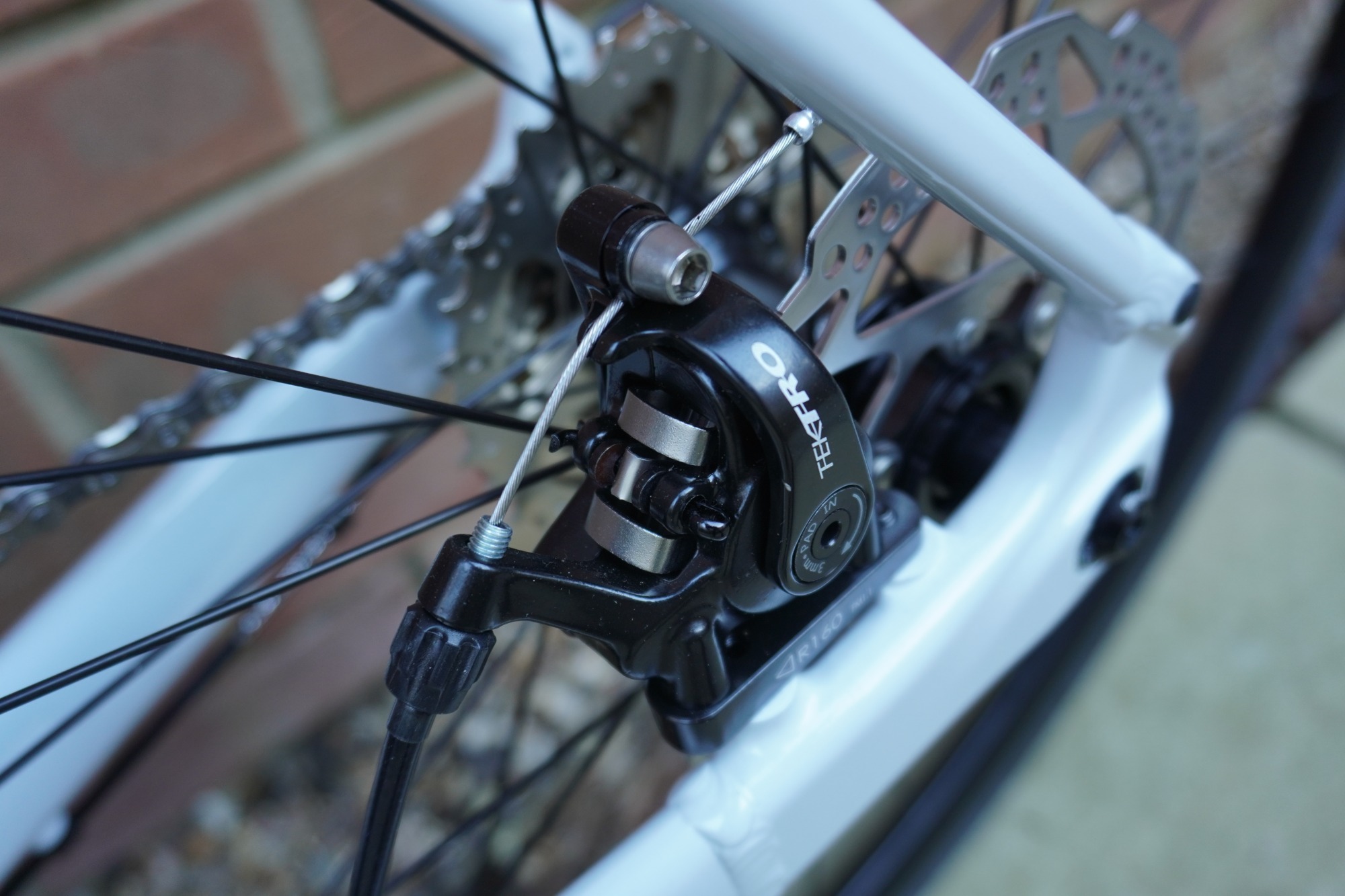
That said, it is worth actually taking the time to make sure they are set up correctly. Using the screws on either side of the caliper, you can adjust how close the pads sit towards the disc – you’ll want to make this even to get the best performance out of the brakes.
This system is actually a lot easier to get set up perfectly than it is with a pair of hydraulic brakes. You can adjust exactly how close the pads sit to the rotor to make sure there’s no brake rub and you don’t get the same issues with sticky pistons and one firing more than the other – which can be a bit of a pain to sort with hydraulics.
The lever action is heavier with these mechanical disc brakes, you don’t get quite the same modulation, and you do have to wind the pads in as they wear (a hydraulic system will adjust automatically). But then they do have their other benefits and they cost a lot less.
In all, these brakes are a great choice for a mechanically actuated system, and with a bit of care, are very good to use.
Wheels and tyres
Cosra rims are laced to 28-hole Shimano RS470 hubs, making for a pretty bombproof set of wheels. Rolling on cup-and cone bearings, servicing them is pretty simple to do at home, only requiring a couple of cone spanners.
These are wrapped in Vittoria Zaffiro clincher tyres, which are a good choice, being hardwearing and puncture resistant without feeling unduly sluggish.
It’s fair to say that upgrading to a lighter set of wheels with faster tyres would have a very noticeable effect on the ride.
But unlike some other stock wheelset setups – which are best replaced and forgotten about – these robust and dependable hoops would still be able to offer service as a rugged set of training wheels for the harsh winter conditions. So at least you’re not paying for something you wouldn’t be able to get use out of.
The ride
Hopping onto the Orbea Avant H60 Disc, in terms of fit, it felt like riding a bus. With 40mm of spacers underneath the stem, the handlebars were significantly higher than what I’m used to.
Hearteningly, the geometry chart does suggest that the fit would be quite good if this were my own bike and I was at liberty to chop the steerer down. But that’s pretty much the point – with a non-integrated steerer, it would have been so simple for me to shuffle the spacers around and get the right height.
To be fair, having the cables tucked so well out of the way did make it much easier to use in combination with a handlebar bag. I’ve seen bar bags kink errant brake lines and gear cables before, but there was no potential for that here. Although do be careful to make sure that the straps of your bar bag won’t squeeze the cables at the handlebar, as this is a recipe for draggy brakes and sloppy shifting.
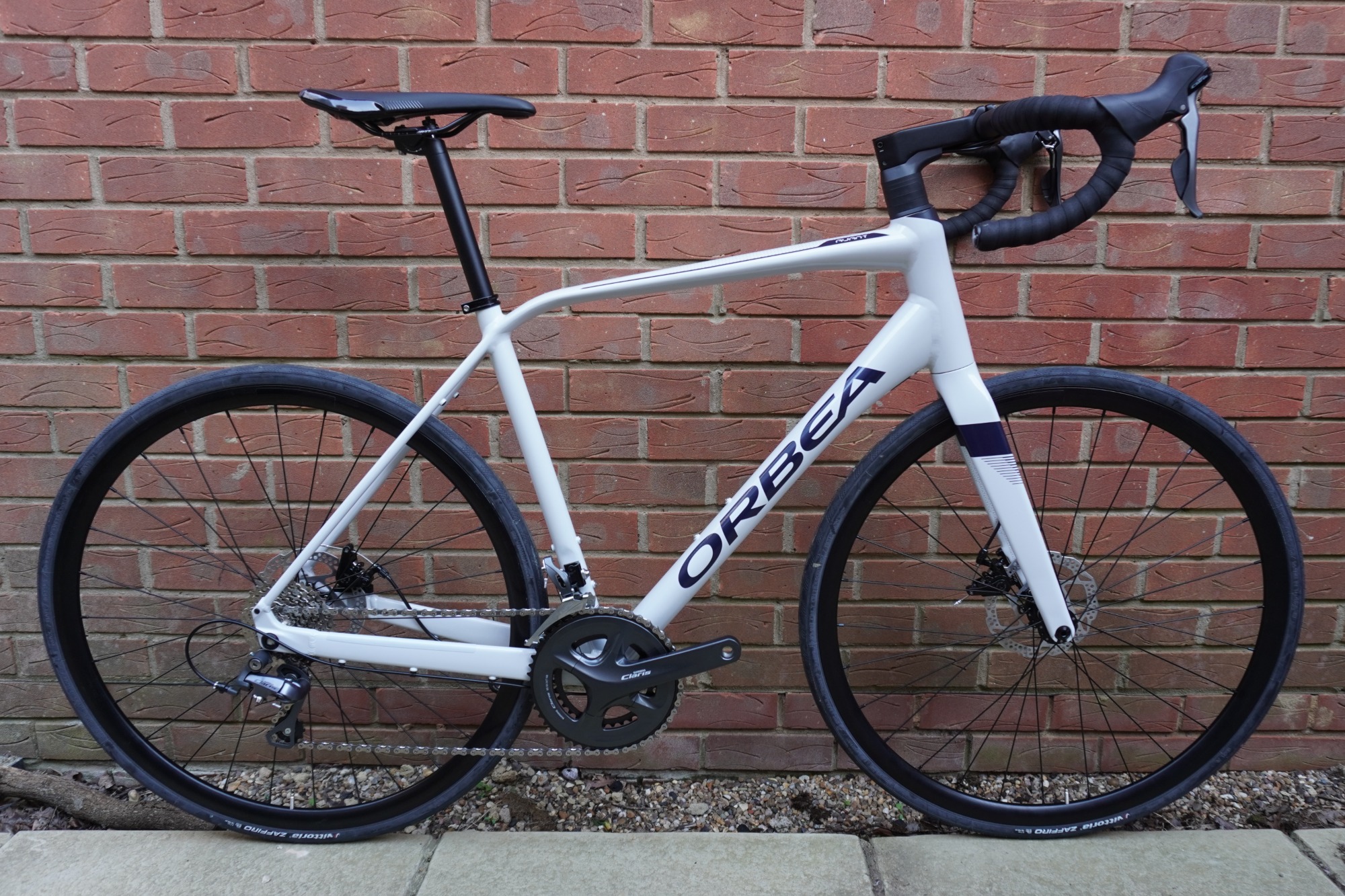
Although at 10.9kg, the Avant H60 disc certainly isn’t a lightweight bike, you feel this more in your arms than with your legs. Obviously, it doesn’t have quite the same acceleration as a feathery carbon bike, but you really don’t feel like you’re putting in the power and only getting a half-hearted response. As pedalling platforms go, this is really rather good for the price.
As expected, the 2x8 drivetrain meant that when pushing hard on the flat, I did find it a little difficult to get myself in a gear which would allow me to turn my favoured cadence. But on rolling terrain – which requires much shifting anyway – and when cycling at a more layed-back pace, the jumps between the gears were totally fine.
There certainly weren’t any issues when it came to the absolute range, with the top end being more than large enough and a bottom gear which I know I’m happy climbing mountains on.
I’ve had a lot of past experience with these Tektro brake caliplers, so while I know how good they can be, I also know how they can be let down by inferior cable housing – and unfortunately that is the case here. The brakes feel a little spongy when you squeeze them, rather than feeling rock solid as they should when the pads hit the rotors.
This can easily be remedied by a set of high-quality brake cables. I wouldn’t hesitate at getting a Dura-Ace set for £45, as it makes a such a transformative effect to the quality of the braking – which is something you’ll be doing on every ride. They can easily last you two years of heavy use before needing to replace them again, so although it might feel a lot to spend on cables, the cost benefit ratio is a high one.
However, with the cable routing as it is, replacing the brake lines isn’t a task I’d particularly want to be doing on this bike – especially having just bought it. Also, that would be another payment on top of what is already a fairly high asking price.
As I often find with these brakes, the stock pads take a longer time to bed-in than those of other brands. I made sure to go up and down my road quite a few times before heading out on them, but even then it took a few full rides for them to reach the power levels they’re capable of.
On the bright side, the wear rate is at least extremely low, I barely lost any material from them in the time I was riding. But on the other hand, if you want to really boost the braking power, some high-quality pads from either Shimano or Swissstop would make a great upgrade
The Zaffiro tyres were pretty great, as tyres on the lower cost and more robust end of the spectrum, they don’t actually feel overly heavy and slow – far more sprightly than other tyres in the same category. And the puncture protection is actually excellent.
Value
When you compare the Orbea Avant H60 Disc to other bikes with equally well-hidden cables, the value is actually very good. Ribble is known for its reasonably priced bikes, but you only get this level of integration when you spend around £2,000.
That said, the broader picture is not quite so rosy. Ribble’s R872 bike is just £40 more at £1,199, but for that you get a full carbon frame and a 2x10 groupset, compared to the aluminium and 2x8 on the Orbea. However, the Ribble is a rim brake design.
To stick with discs, there’s Pinnacle's Arkose R1 which has an aluminium frame like the Obrea, but 2x10 gearing like the Ribble. It’s significantly cheaper than both of these bikes though, coming in at £900.

Thank you for reading 20 articles this month* Join now for unlimited access
Enjoy your first month for just £1 / $1 / €1
*Read 5 free articles per month without a subscription

Join now for unlimited access
Try first month for just £1 / $1 / €1
Get The Leadout Newsletter
The latest race content, interviews, features, reviews and expert buying guides, direct to your inbox!

After winning the 2019 National Single-Speed Cross-Country Mountain Biking Championships and claiming the plushie unicorn (true story), Stefan swapped the flat-bars for drop-bars and has never looked back.
Since then, he’s earnt his 2ⁿᵈ cat racing licence in his first season racing as a third, completed the South Downs Double in under 20 hours and Everested in under 12.
But his favourite rides are multiday bikepacking trips, with all the huge amount of cycling tech and long days spent exploring new roads and trails - as well as histories and cultures. Most recently, he’s spent two weeks riding from Budapest into the mountains of Slovakia.
Height: 177cm
Weight: 67–69kg
-
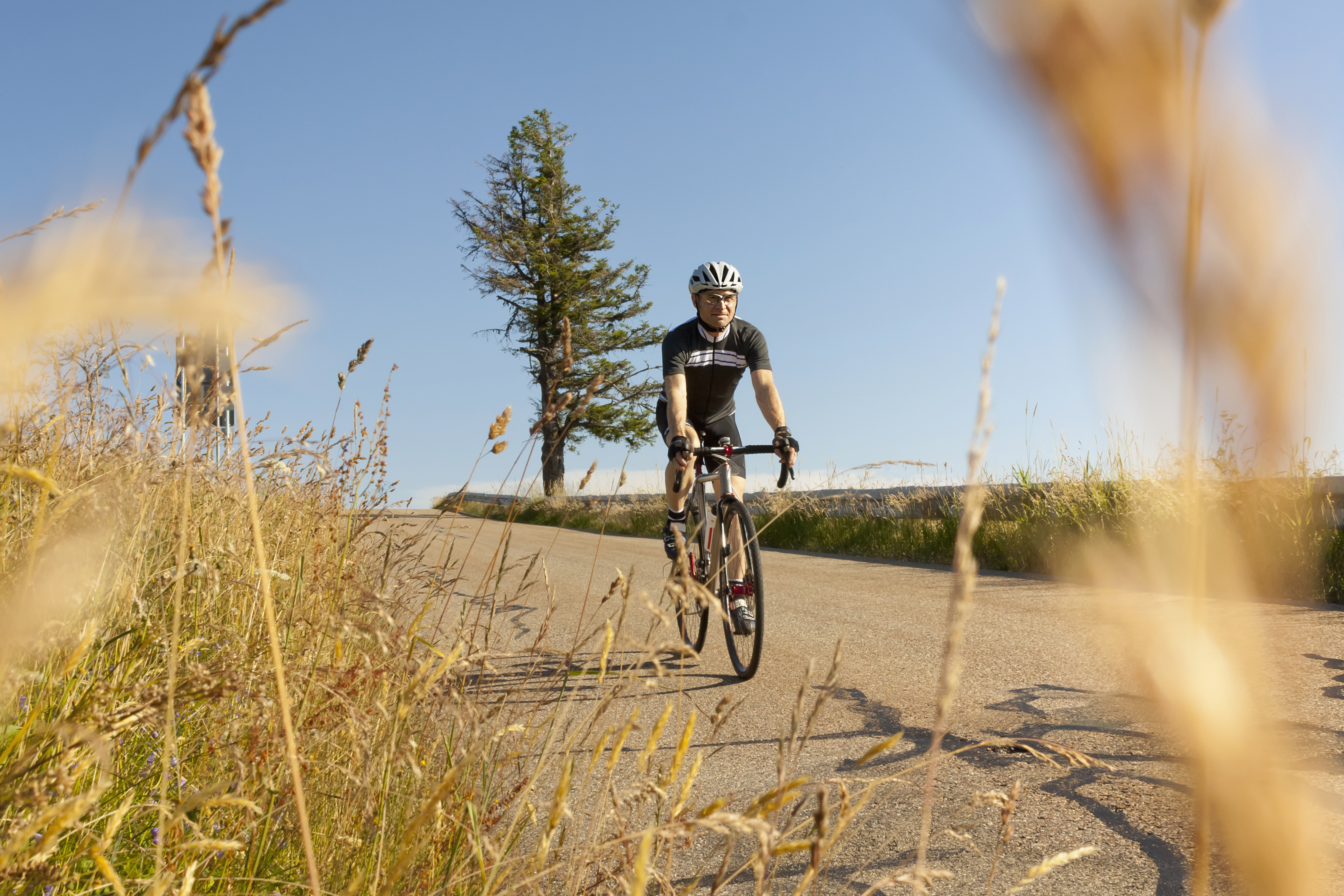 Hayfever and your riding: how to combat it as the pollen strikes
Hayfever and your riding: how to combat it as the pollen strikesExplanations, medications and holistic measures to make your spring and summer riding more enjoyable
By James Shrubsall Published
-
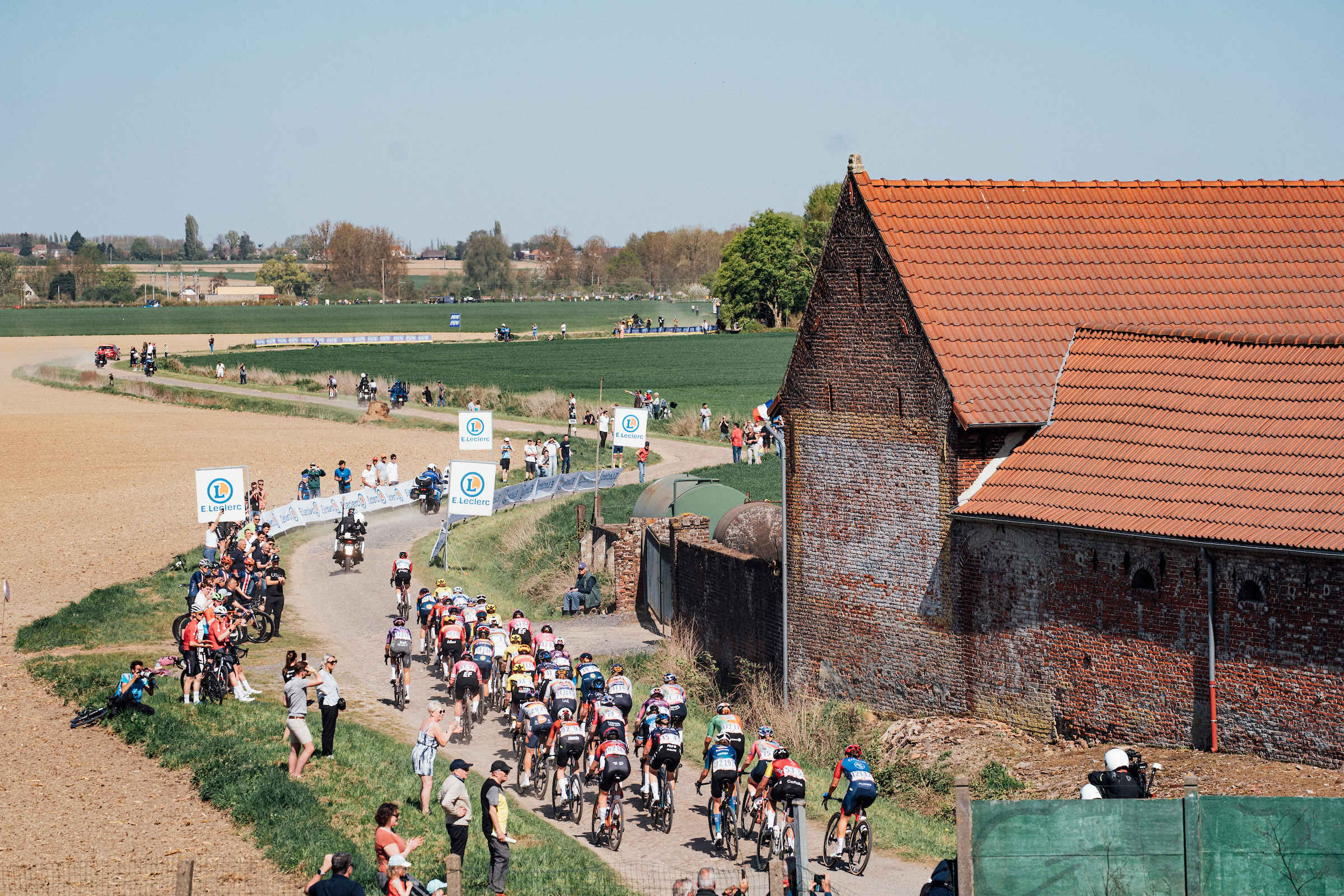 I went to Paris-Roubaix Femmes and was shocked at how it is still treated as secondary to the men’s race
I went to Paris-Roubaix Femmes and was shocked at how it is still treated as secondary to the men’s raceThe women’s version of the Hell of the North is five years old, but needs to be put more on equal footing with the men
By Adam Becket Published
-
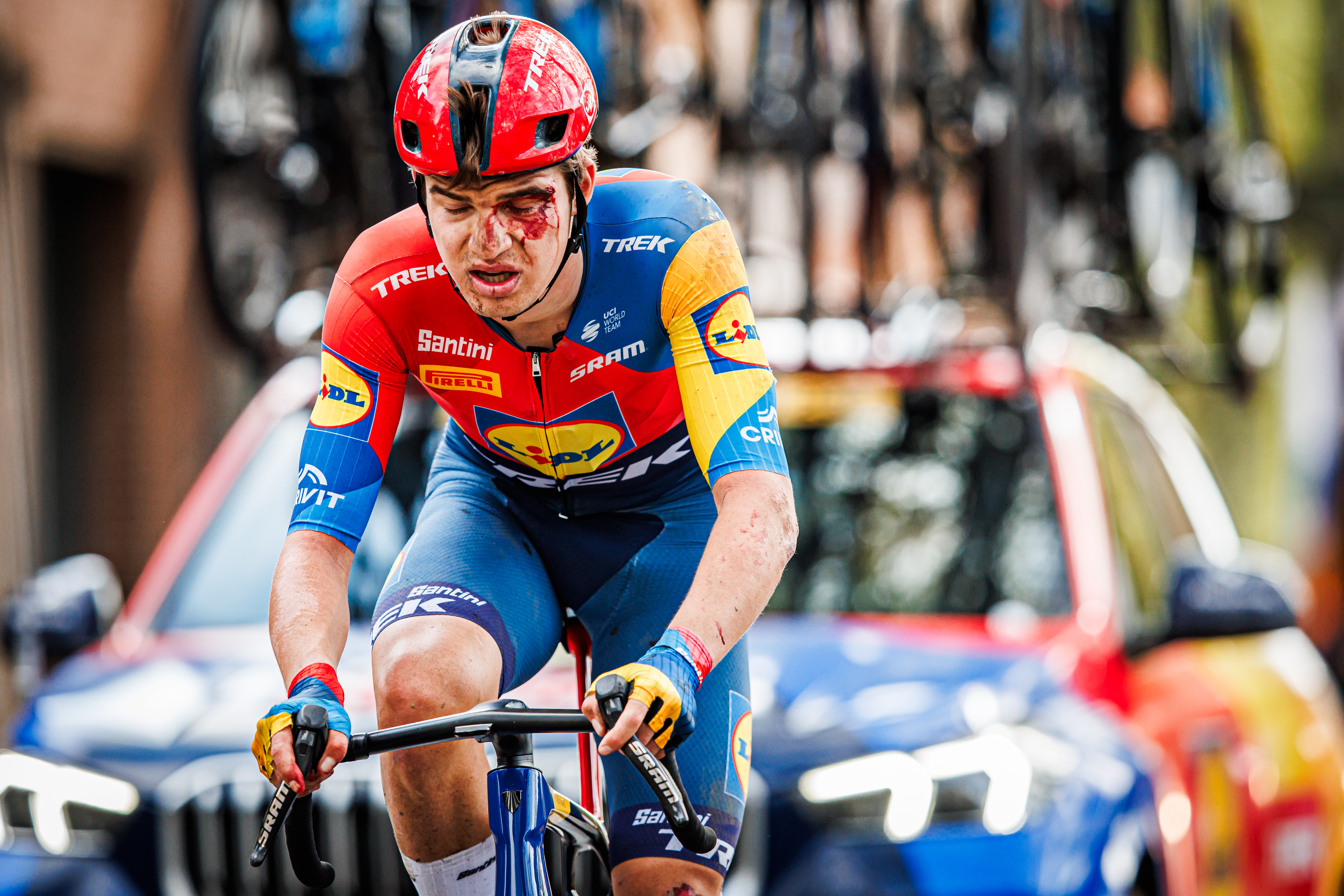 Broken hips, hands, and collarbones: Paris-Roubaix's lengthy injury list lays bare brutality of race
Broken hips, hands, and collarbones: Paris-Roubaix's lengthy injury list lays bare brutality of race"It probably wasn't the best idea to continue," says one of weekend's many wounded riders
By Tom Davidson Published